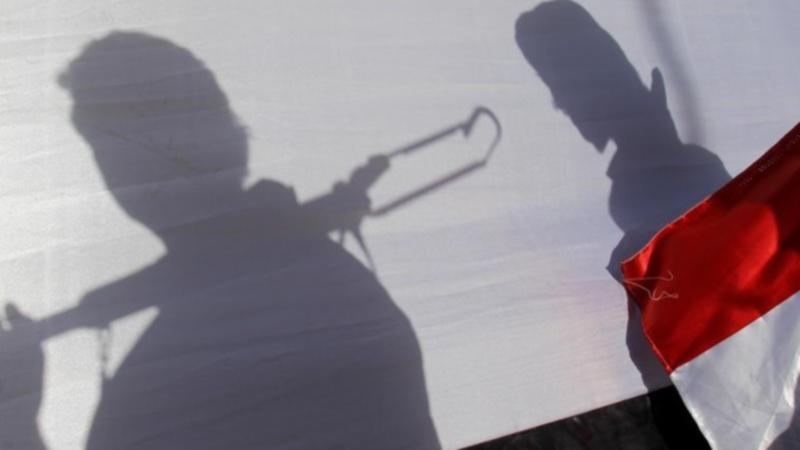The Economist: Who are the Houthis, the group attacking ships in the Red Sea?

The war between Israel and Hamas has left ripples in the Red Sea. Since the bombardment of Gaza began, the Houthis, a Yemeni rebel group, have launched a series of attacks on cargo ships. The insurgents, who are backed by Iran, say they are acting in solidarity with Palestinians. They have threatened to attack any ship bound for or leaving Israel without delivering humanitarian aid to Gaza. On November 19th Houthi fighters hijacked a cargo ship with links to an Israeli company (see video below). On December 12th a missile launched from a Houthi-controlled area of Yemen damaged a Norwegian tanker, which its owner says was not bound for Israel. French warships have also been targeted. America is trying to drum up support for a naval task-force to deal with the problem. Who are the Houthis, and why are they getting involved in the war?
The Houthi movement emerged in northern Yemen, where most people follow Zaydism, a sub-sect of Shia Islam. Zaydi imams had jostled for control of the region for centuries, and in 1918 they established a sovereign state. The imams ruled until 1962, when a military coup sparked a civil war that led to the establishment of the Yemen Arab Republic. Zaydi areas became poorer than the predominantly Sunni midlands. In the 1980s the Saudi and (to a lesser extent) Yemeni governments began promoting radical Sunnism in the north.

Sign up to The Nightly's newsletters.
Get the first look at the digital newspaper, curated daily stories and breaking headlines delivered to your inbox.
By continuing you agree to our Terms and Privacy Policy.A relatively peaceful Zaydi resistance movement emerged in response. In the 1990s Hussein al-Houthi, a Zaydi cleric, helped to launch the Believing Youth, summer schools meant to counter the establishment of Saudi-funded Sunni seminaries. By 2001 his group had split; followers of his faction became known as the Houthis.
Growing support for the movement made it a threat to Yemen’s government; the country’s leaders had supported America’s invasion of Iraq in 2003, which many Yemenis decried. Capitalising on their outrage, Houthi called for mass protests. He referred to Iran’s Islamic Revolution and Lebanon’s Hizbullah as models of resistance. The group adopted a slogan calling for the extermination of America and Israel: Houthi is said to have first uttered it in 2000, after seeing footage of a Palestinian child killed by Israeli soldiers during the second intifada, the Palestinian uprising at the beginning of this century.
As rebellion in the north grew, the government cracked down. After Houthi was killed by government forces in 2004, the new Houthi leaders fought their first war against the Yemeni government. Much of their weaponry came from the black market or sources in the military. The brutality of the government clampdown encouraged more fighters to join subsequent bouts of conflict, building up the group’s military wing. In 2011, during the Arab spring, the Houthis seized control of Saada, a province in northern Yemen, and adopted the name Ansar Allah, or “Defenders of God”.
In 2014 the Houthis swept out of their northern stronghold and took control of Sana’a, Yemen’s capital. With the support of Iran, they seized most of western Yemen. The country’s then-president, Abd Rabbo Mansour Hadi, fled to Saudi Arabia. In 2015, at his request, the Saudis launched a campaign against the Houthis: in the years that followed around 25,000 airstrikes killed more than 19,000 civilians. The UN said in early 2023 that it was still the world’s worst humanitarian crisis. Since a ceasefire in April 2022 Yemen has enjoyed relative calm. That has allowed the Houthis to tighten their grip on portions of the country still under their control, including Sana’a (see map). They appear to be close to a deal with the Saudis that would stop the war and cement their role in the government.
Although their fighters call for death to America and Israel, the Houthis lack the capabilities to pose a serious threat outside Yemen. They probably have few missiles capable of reaching Israel. One of its longest-range missiles, the Burkan-2h, can travel around 1000km, not nearly far enough (see chart). But hitting ships is another matter. Iran’s help has transformed the Houthis from a ragtag army into a force with regional reach over a bottleneck for international trade, supplying them with an arsenal of sophisticated weapons and technology for anti-tank, ballistic and cruise missiles. The Houthis’ recent attacks could drive up insurance costs, or force ships to take a longer route around Africa. That has made the West take note. Assaults on Israeli-linked ships could improve the group’s standing in the Arab world, where support for the Palestinian cause is high. It benefits the Houthis domestically too: their actions appear to have won them some support from the downtrodden in Yemen.
